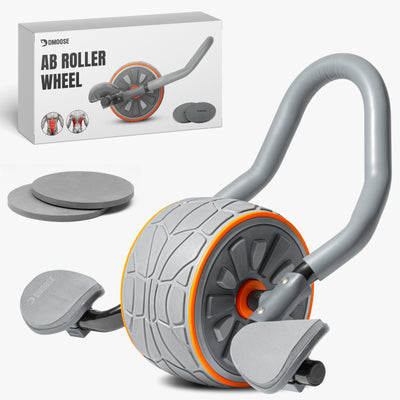If you've ever noticed that your ribs stick out more than they should or that your lower back appears excessively curved, you may be experiencing a condition known as rib flaring.
Rib flaring occurs when the lower ribs protrude forward and outward, creating a visible bulge in the midsection. This not only affects your appearance but can also cause postural imbalances and lead to various health issues.
Fortunately, several exercises and techniques can help correct rib flaring and restore proper posture. In this article, we’ll explain what rib flaring is, what causes it, and, most importantly, how to fix it.
The tips and techniques discussed here will help you achieve a more balanced and aligned body. So, let’s dive in and explore how you can fix rib flaring posture imbalance.
What is Rib Flaring?

Rib flaring is a postural imbalance where the lower ribs protrude forward and outward instead of aligning naturally with the rest of the rib cage. This condition often occurs due to weak core muscles, poor posture, or improper breathing mechanics. Over time, rib flaring can lead to lower back discomfort, reduced core stability, and an uneven appearance of the torso if not corrected.
Anatomy of a Rib Cage

The rib cage is a vital structure that protects your heart, lungs, and other organs while supporting your upper body movement and stability. It’s made up of 12 pairs of ribs, the sternum (breastbone), and the thoracic spine. The ribs are connected to the spine at the back and curve around to attach to the sternum or costal cartilage in the front, creating a flexible yet protective cage.
This design allows the chest to expand and contract during breathing. The rib cage also provides attachment points for important muscles, including the diaphragm, intercostals, and abdominal muscles, all of which help with respiration and core stability.
When these muscles are weak or imbalanced, the alignment of the rib cage can be affected, leading to issues like rib flaring and poor posture.
What Causes Rib Flaring?

Rib flaring can result from a combination of muscular imbalances, poor posture, and improper breathing mechanics. Understanding these causes is essential for correcting alignment and restoring proper core function.
Poor Posture
Poor posture is one of the leading causes of rib flaring. Slouching or leaning forward for extended periods misaligns the rib cage, forcing the lower ribs to protrude outward. Over time, this can lead to spinal curvature issues such as lordosis and increased strain on the lower back muscles.
Weak Core Muscles
Your core muscles play a vital role in stabilizing the rib cage and spine. When they are weak or underused, the body compensates with other muscle groups, leading to imbalances that cause the ribs to flare forward. Strengthening deep core muscles, like the transverse abdominis, helps restore proper posture and alignment.
Tight Chest Muscles
Tight or shortened chest muscles pull the rib cage forward and downward, making the lower ribs stick out. This tightness can also affect breathing efficiency and shoulder mobility. Regular stretching and mobility exercises for the chest can help release this tension and improve alignment.
Improper Breathing Mechanics
Shallow chest breathing or overuse of upper respiratory muscles instead of the diaphragm can cause the ribs to push outward. This inefficient breathing pattern limits core engagement and contributes to rib flaring. Practicing diaphragmatic breathing encourages better rib control and posture correction.
Spinal Misalignment
An exaggerated curve in the spine, particularly in the lumbar or thoracic regions, can tilt the rib cage forward and create a flaring effect. This misalignment often develops from prolonged sitting, muscle weakness, or poor posture habits. Focusing on spinal mobility and alignment exercises is crucial for long-term correction.
Symptoms of Rib Flaring
Recognizing the symptoms of rib flaring early can help prevent long-term posture issues and discomfort. These signs often involve visible changes in body alignment, discomfort in the back or chest, and difficulty maintaining proper breathing patterns.
Visible Rib Protrusion
One of the most common signs of rib flaring is a visible bulge in the midsection where the lower ribs stick out more than usual. This is often noticeable when standing relaxed or taking a deep breath. The condition may be more visible in individuals with lower body fat or a pronounced posture imbalance.
Lower Back Pain or Discomfort
Rib flaring can cause excessive curvature in the lower spine, leading to increased stress on the lumbar region. Over time, this imbalance can result in persistent lower back pain or stiffness. This occurs because the body compensates for poor alignment by overworking the surrounding muscles, leading to fatigue and strain.
Poor Posture and Shoulder Alignment
Individuals with rib flaring often experience slouched shoulders or an overly arched lower back. The imbalance between the chest and core muscles causes the upper body to lean forward while the ribs protrude outward, leading to poor posture and shoulder misalignment.
Breathing Difficulties
When the rib cage flares, it can restrict optimal diaphragm movement, resulting in shallow chest breathing instead of full, deep breaths. Over time, this inefficient breathing pattern can cause fatigue, reduced oxygen intake, and decreased endurance during physical activity.
Muscle Imbalance and Core Weakness
Rib flaring is closely tied to weak core muscles and tight upper-body muscles. This imbalance not only affects posture but also reduces stability during workouts and daily movements. Strengthening the deep core and improving flexibility through targeted exercises can help correct this symptom and restore balance.
How to Fix Rib Flare? 6 Most-Effective Workouts
There are several ways to fix rib flare, but the most effective method is to strengthen the muscles that support the spine. This can be done through various exercises, such as Pilates or yoga.
In addition, maintaining proper posture and alignment while working out is crucial. Wearing a supportive brace can also help reduce rib flare. You can use a DMoose 5mm Powerlifting Belt to improve posture during workouts and support heavier lifts with proper form.
With time and consistency, you can correct rib flaring and enhance your overall spinal health. The key is to listen to your body and focus on exercises that work best for you. Below are some effective movements to improve posture and fix rib flare.
1. Side-Lying Windmill
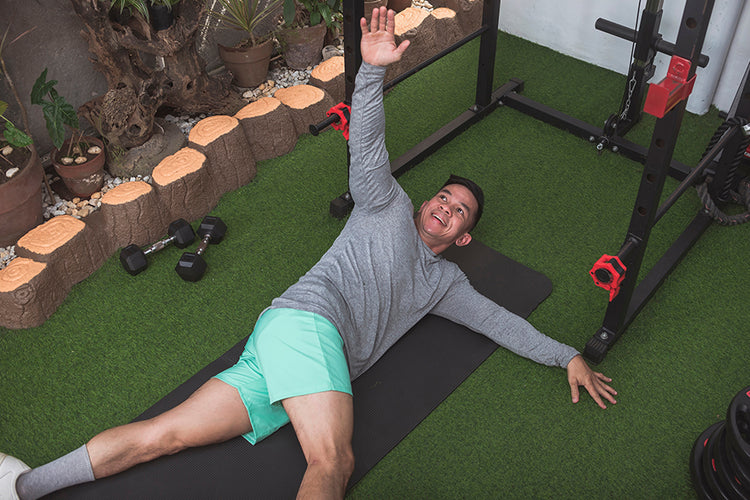
The Side-Lying Windmill is an excellent exercise for correcting rib flaring posture imbalance. It strengthens the obliques, hips, and shoulders while promoting mobility in the upper back and thoracic spine. This movement enhances posture, reduces the risk of lower back pain, and improves overall flexibility.
How to Perform Side-Lying Windmill:
- Lie on your side with your legs straight and your head resting on your bottom arm.
- Bend your top knee and place your foot on the floor in front of your body for stability.
- Extend your top arm toward the ceiling, keeping your shoulder blades down and away from your ears.
- Exhale as you slowly rotate your torso, reaching your arm across your body toward the floor behind you.
- Allow your ribs to open naturally as you rotate, then return to the starting position.
- Repeat the movement for several repetitions before switching sides.
2. Pilates Scissor

The Pilates Scissor is another effective exercise for correcting rib flaring posture imbalance. It strengthens the core muscles, particularly the abs, hips, and lower back, helping you maintain better alignment and stability. This movement also stretches the hamstrings and lower back, relieving tension caused by poor posture.
How to Perform Pilates Scissor:
- Lie flat on your back with your legs extended and arms by your sides.
- Lift your head, neck, and shoulders off the floor as you engage your core and pull your ribs down to avoid flaring.
- Raise both legs toward the ceiling and hold one leg gently behind the calf or thigh.
- Exhale as you lower the opposite leg toward the floor, keeping it straight and controlled.
- Switch legs in a scissor-like motion while keeping your head and shoulders lifted.
- Continue alternating for 10–20 repetitions, focusing on slow, controlled movements and steady breathing.
3. Bird Dog
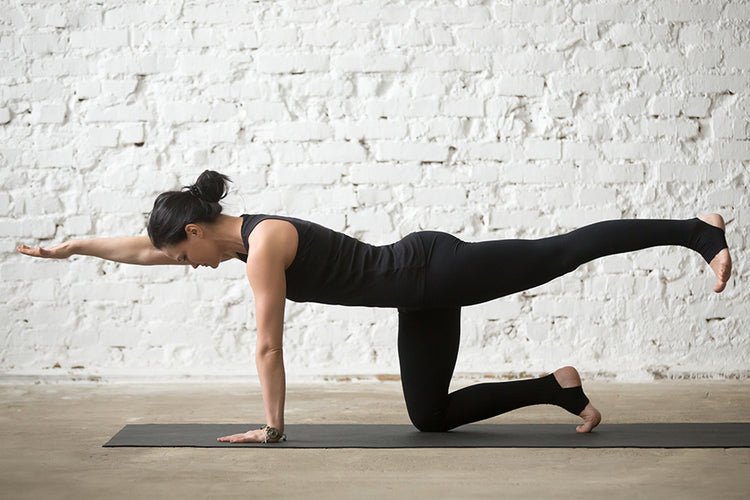
The Bird Dog is a highly effective exercise for improving posture and reducing rib flaring. It strengthens the core, back, and glute muscles, all of which play a key role in stabilizing the spine and maintaining proper alignment. It also enhances balance and coordination, reducing the risk of injuries and improving overall movement control.
How to Perform Bird Dog:
- Start on all fours with your hands directly under your shoulders and your knees under your hips.
- Engage your core and maintain a neutral spine throughout the movement.
- Extend your right arm forward and your left leg backward until both are parallel to the ground.
- Hold the position for a few seconds, keeping your hips level and your core tight.
- Return to the starting position, then switch sides by extending your left arm and right leg.
- Perform 10 to 12 repetitions on each side with controlled movements.
4. Superman
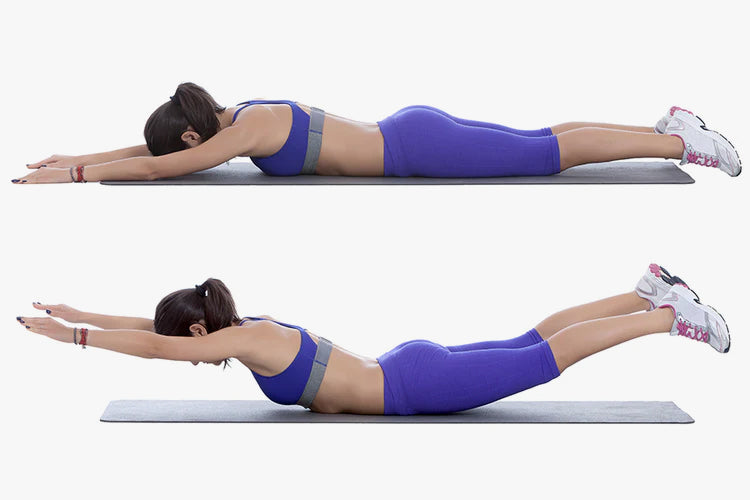
The Superman exercise is one of the most effective movements for improving rib flaring posture imbalance. It strengthens the lower back, glutes, and core—muscle groups essential for maintaining good spinal alignment and posture. By reinforcing these muscles, you create a more stable foundation that naturally draws the rib cage into proper position.
Although it looks simple, this exercise can be challenging if performed correctly. Keep your core engaged, breathe steadily, and avoid arching your lower back excessively. The Superman is suitable for both beginners and advanced individuals who want to build back strength and improve posture.
How to Perform Superman:
- Lie face down on the floor with your arms extended in front of you and your legs straight.
- Engage your core and glutes, then slowly lift your arms, chest, and legs off the ground.
- Keep your neck neutral and avoid straining your lower back.
- Hold the position for 2 to 3 seconds while squeezing your back and glute muscles.
- Lower your limbs slowly back to the floor and repeat for 10 to 12 repetitions.
5. Planks

The plank is a fundamental core exercise that strengthens the abdominal muscles, lower back, and shoulders. It helps improve posture by reinforcing the muscles responsible for stabilizing the spine, which can reduce rib flare and prevent misalignment. Regularly performing planks enhances body awareness, core strength, and overall stability.
How to Perform Plank:
- Begin in a push-up position with your arms straight and hands directly under your shoulders.
- Lower yourself onto your forearms so your elbows are aligned under your shoulders.
- Keep your body in a straight line from head to heels, avoiding sagging or arching your back.
- Engage your core and glutes, and hold this position for 30 seconds to 1 minute.
- To increase difficulty, try raising one leg or extending your hold time.
6. Ab Workouts to Fix Rib Flare
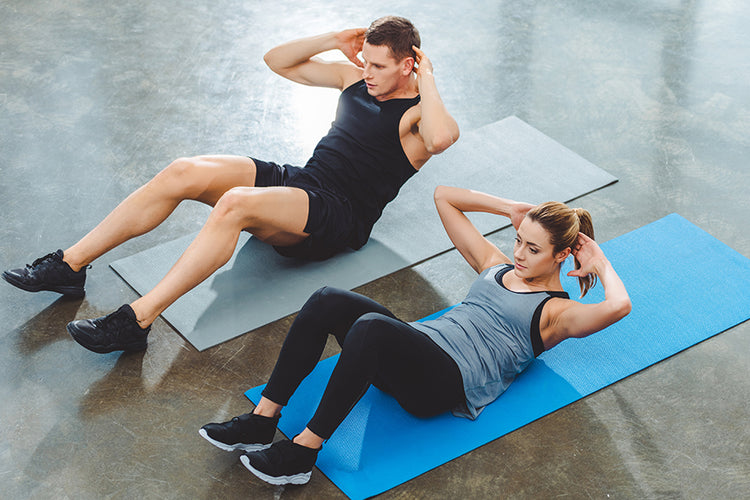
Strong abdominal muscles are crucial for correcting rib flare and maintaining spinal alignment. Core engagement supports the rib cage, keeping it from protruding outward and stabilizing the torso during daily movements and workouts. Instead of simply “squeezing the abs,” targeted ab exercises help build endurance and strength in the deep core muscles.
How to Perform Dead Bug:
- Lie on your back with your arms extended toward the ceiling and your knees bent at 90 degrees.
- Engage your core and press your lower back into the floor to avoid arching.
- Slowly lower your right arm and left leg toward the floor while keeping the opposite limbs steady.
- Return to the starting position and switch sides, lowering your left arm and right leg.
- Perform 10 to 12 repetitions per side, keeping your movements slow and controlled.
The Dead Bug is especially effective for strengthening the transverse abdominis, which helps pull the ribs down and maintain a neutral spine. Incorporate this and other core-stabilizing exercises into your routine to fix rib flare and improve posture over time.
Related Article: 10 Signs You Have a Weak Core Strength and How to Fix it
Breathing: Zone of Apposition
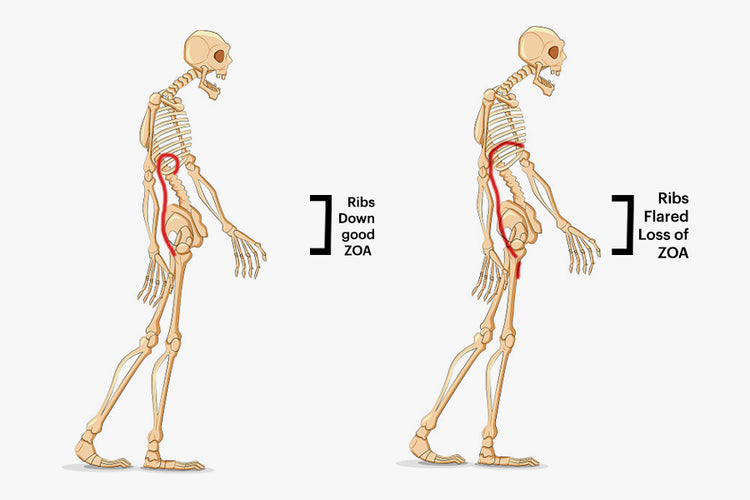
Having a natural rib structure is essential for many reasons. One key reason is that it allows for a connection between the abs and the diaphragm, called the "Zone of Apposition," or ZOA.
When the ZOA is reduced, it leads to improper breathing patterns because the diaphragm cannot compress properly. This also decreases the ability to contract the abdominal muscles when needed.
Once the rib cage is in its natural position, proper breathing patterns and abdominal function can be restored.
Rib flare restrictions prevent your body from releasing all its air. This leaves "old" air in your lungs with a high concentration of CO2 and other pollutants, making it harder for your body to reach the Zone of Apposition.
As a result, your body struggles to enter a parasympathetic state. The parasympathetic state is one of rest and repair. It helps fix internal imbalances and prepares the body for future challenges. In this state, the body can heal wounds, repair damaged tissue, and store energy efficiently.
When the body cannot attain this state, it can lead to an increased heart rate and decreased digestive and glandular activity. The key to achieving a parasympathetic state is to focus on your breathing.
Breathing is a powerful tool that can calm both the mind and body. Deep, slow breathing activates the parasympathetic nervous system, while shallow, fast breathing activates the sympathetic system. By focusing on your breath, you can learn to control your nervous system and enter a state of rest and repair.
Using Arm Blaster for Rib Flare
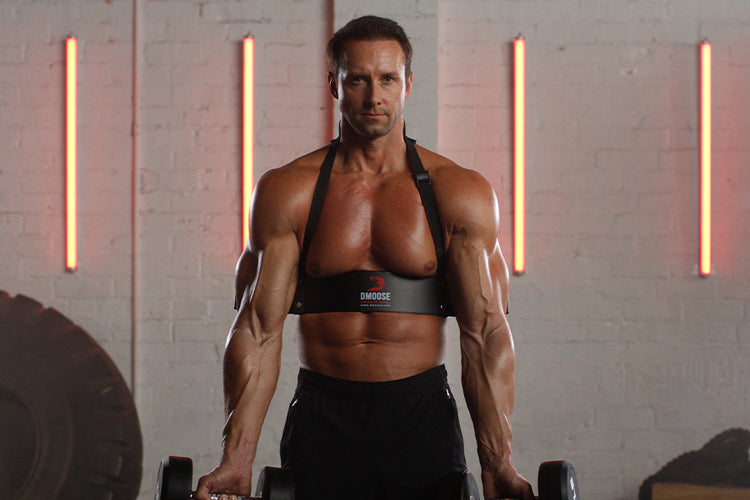
One effective way to fix rib flare is by using an arm blaster. This piece of equipment helps you maintain proper arm positioning during workouts, ensuring you activate the right muscles and achieve a full range of motion. It also prevents you from using momentum to swing the weight, reducing the risk of injury and improving overall workout efficiency.
The DMoose Arm Blaster is a simple yet powerful training tool that consists of a strap around the chest and curved support for the arms. It promotes better isolation of the biceps and triceps while encouraging proper posture and alignment, which can help reduce rib flare over time.
When using the arm blaster, hold a weight in each hand and extend your arms slightly forward to engage the upper body muscles correctly. This movement activates the muscles along the sides of the rib cage, helping pull the ribs back into a natural position. Consistent use can aid in correcting rib flare and create a more balanced, streamlined upper body appearance.
Tips for Maintaining Proper Posture
Do you spend a lot of time sitting at a desk or standing on your feet? Whether you're at work or at home, it's crucial to maintain good posture to prevent rib flaring and other posture-related problems.
But good posture doesn't have to be boring or uncomfortable. With these simple tips and techniques, you can improve your posture and feel more comfortable in your body.
Sitting Posture Tips

Let’s start with sitting posture. Like most people, you probably spend a lot of time at a desk or looking at a computer screen. Sitting for long periods can cause problems ranging from back pain to neck strain. To maintain good sitting posture, try these tips:
- Keep your feet flat on the floor and your knees at a right angle. This helps prevent excess pressure on your lower back.
- Keep your shoulders relaxed and your back straight. Avoid slouching or hunching forward.
- Position your computer screen at eye level to reduce strain on your neck and eyes.
- Use a chair that provides good lower back support to reduce pain and discomfort.
- Take frequent breaks to stand, stretch, and move around to keep your body comfortable and active.
Standing Posture Tips
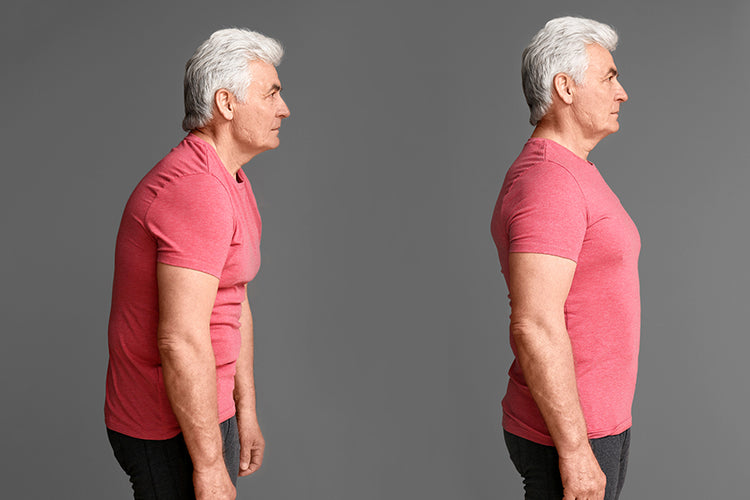
Now let’s talk about standing posture. Whether you’re in line at the grocery store or waiting for the bus, standing for long periods can be tough on your body. Follow these tips to maintain balance and alignment:
- Stand with your feet hip-width apart and distribute your weight evenly on both feet to stay balanced and avoid joint strain.
- Keep your shoulders down and back with your chin level to the ground. Avoid slouching or tilting your head down toward your phone.
- Engage your core muscles to support your spine and maintain proper alignment.
- Wear comfortable shoes with good arch support to prevent foot, knee, and back pain.
- Take short breaks to sit down and rest your feet when standing for extended periods.
Sleeping Posture Tips
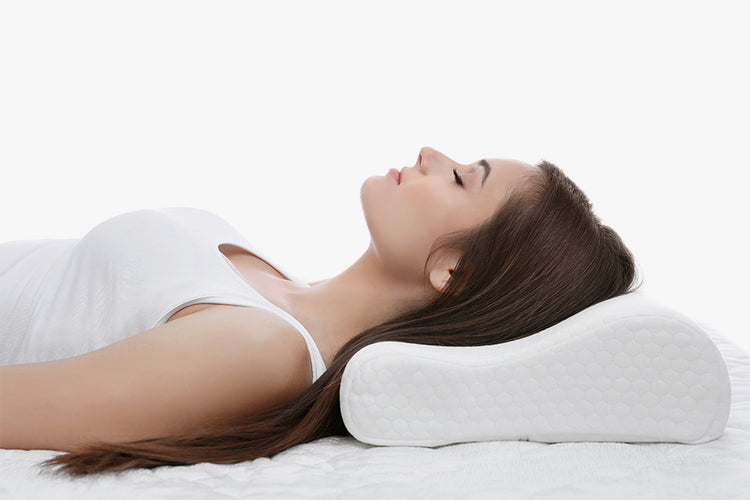
Your sleeping position can have a major impact on posture and rib flaring. To sleep better and wake up feeling refreshed, follow these tips:
- Sleep on your side or back to minimize strain on your neck and spine.
- Use a pillow that properly supports your neck and spine. It should be firm enough to hold your head but not so high that it pushes your neck forward.
- If you sleep on your side, place a pillow between your knees to keep your hips aligned and reduce stress on your lower back.
- Avoid sleeping on a saggy mattress that lacks support. Choose one that is firm enough to support your weight without causing discomfort.
- Stretch before bed to release muscle tension and promote relaxation for a better night’s sleep.
By practicing these posture tips daily, you can prevent rib flaring, improve spinal alignment, and move through your day with more confidence and comfort.
Wrapping It All Up
Fixing rib flaring and posture imbalances requires effort and mindfulness, but the benefits are well worth it.
By improving your posture, you can reduce your risk of developing chronic pain and injury, and even boost your confidence and self-esteem. Whether you're sitting at your desk, working out, or simply going about your day, remember to keep your shoulders back, engage your core muscles, and practice good alignment.
Don't forget to take regular breaks, stretch, and move around to keep your body feeling its best. By making these simple changes, you can improve your posture and overall well-being and live your life to the fullest.
So why wait? Start practicing good posture today and enjoy the benefits of a healthy, aligned body!












